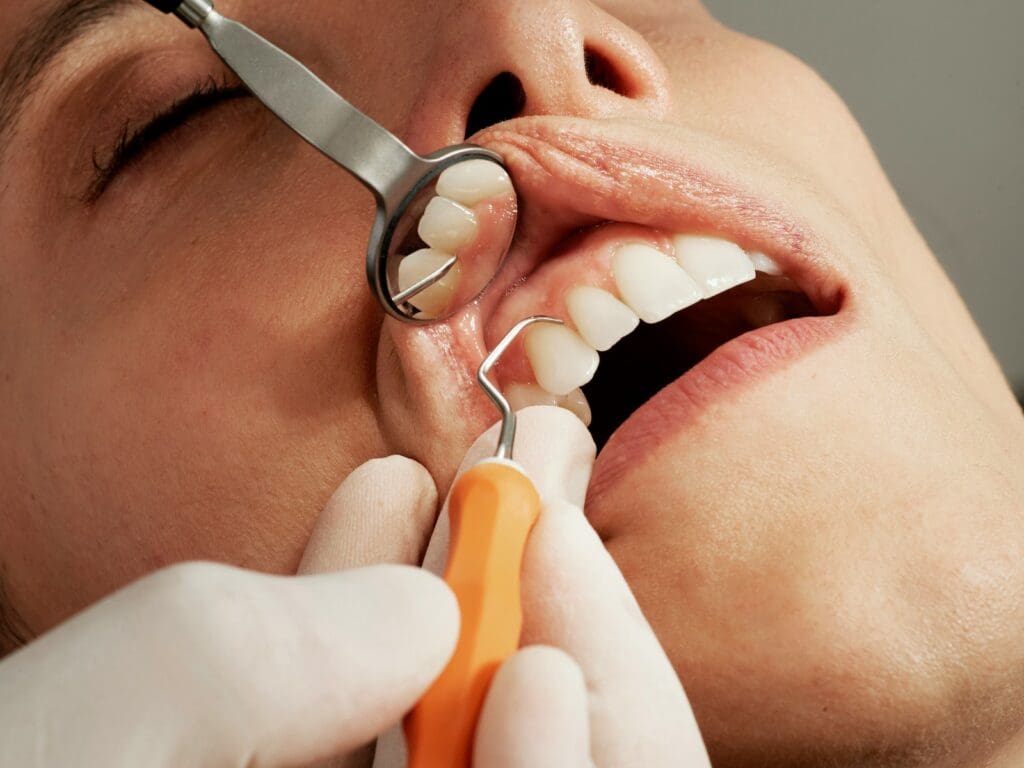
Strategies for Optimal Oral Health
Dental health is a vital component of overall well-being, yet it is often overlooked until problems arise. Common dental issues such as tooth decay, gum disease, and bad breath can not only cause discomfort but also lead to more serious health complications if left unaddressed. Understanding the root causes of these dental problems is the first step in prevention.
Factors contributing to dental ailments range from poor oral hygiene and diet to lifestyle choices and genetics. Regular brushing and flossing play a critical role in maintaining oral health by preventing the buildup of plaque, which can lead to cavities and gum disease. In addition, a diet high in sugar and acidic foods can accelerate tooth decay and erode enamel strength.
Effective prevention strategies are crucial for reducing the risk of developing common dental issues. They emphasize the importance of routine dental check-ups, as these allow for early detection and treatment of potential problems. Incorporating fluoride treatments, anti-bacterial mouthwashes, and making informed dietary choices are also essential practices for preserving dental health and preventing the onset of dental diseases.
Understanding Dental Health
Dental health is a crucial aspect of overall well-being, involving the integrity of teeth and gums. It is pivotal to understand the structure of the mouth and factors that affect dental health to maintain it effectively.
Anatomy of Teeth and Gums
Teeth are composed of enamel, dentin, pulp, and cementum. Enamel is the outermost layer and the hardest substance in the human body. Dentin beneath the enamel provides support. The pulp is the innermost part containing nerves and blood vessels, while cementum covers the root and helps secure the tooth in the jawbone. Surrounding the teeth, the gums or gingiva are soft tissues that provide a seal around the teeth, protecting more sensitive areas from bacterial invasion.
Factors Contributing to Dental Issues
Several factors can lead to dental problems. Key contributors include:
- Poor Oral Hygiene: Lack of regular brushing and flossing can allow plaque to build up, causing decay and gum disease.
- Diet: Frequent consumption of acidic or sugary foods and beverages can erode tooth enamel and foster cavities.
- Lifestyle Choices: Smoking and alcohol can negatively impact oral health, leading to gum disease and oral cancer.
- Genetics: Some individuals may be more predisposed to dental issues due to hereditary factors.
- Health Conditions: Certain diseases such as diabetes can increase the risk of periodontal disease.
Understanding these factors is the first step in preventing dental issues and maintaining healthy teeth and gums.
Common Dental Problems
Dental problems can significantly impact a person’s quality of life if not identified and treated promptly. Understanding their causes and how to prevent them is crucial for maintaining oral health.
Tooth Decay and Cavities
Tooth decay is the destruction of tooth enamel and can lead to cavities, small openings or holes in the teeth. It often results from frequent exposure to sugary drinks and snacks and poor oral hygiene. Regular brushing with fluoride toothpaste and reducing sugar intake can help prevent this issue.
Gum Diseases
Gum disease, such as gingivitis and periodontitis, is caused by plaque buildup along and under the gum line. They can lead to inflammation, soreness, and even tooth loss. To combat gum disease, one should practice thorough daily brushing and flossing and consider using an antiseptic mouthwash.
Oral Cancers
Oral cancers encompass malignancies found in the mouth, throat, or lips. Key risk factors include tobacco use, heavy alcohol consumption, and human papillomavirus (HPV) infection. Regular dental check-ups and reducing risk factors are crucial for early detection and prevention.
Tooth Erosion
Tooth erosion involves the loss of tooth enamel due to acid attacks, leading to structure damage. It often comes from consuming too many acidic foods and drinks. Rinsing the mouth with water after acidic intake and waiting to brush can help prevent erosion.
Tooth Sensitivity
Tooth sensitivity is discomfort in teeth from hot, cold, sweet, or sour foods and drinks. It can result from exposed tooth roots or worn tooth enamel. Desensitizing toothpastes can help reduce sensitivity, and a dentist can advise on appropriate treatments.
Toothaches and Dental Emergencies
Toothaches may indicate problems needing urgent care, such as an abscess or cracked tooth. Dental emergencies require immediate attention from a professional. Regular dental visits and protective measures, like wearing mouthguards during sports, can avert emergencies.
Daily Oral Hygiene Practices
Establishing a thorough oral hygiene routine is critical for preventing dental health issues. Good habits include proper brushing techniques, regular flossing, and the use of mouthwash and fluoride products.
Brushing Techniques
Effective brushing involves not just the frequency but also the method used. Dentists recommend brushing twice daily with a fluoride toothpaste for at least two minutes. One should use a soft-bristled toothbrush and replace it every three to four months. The technique is as important as the tools; one should use gentle, circular motions to clean the teeth and gum line.
| Step | Action |
|---|---|
| 1 | Apply a pea-sized amount of toothpaste to the brush. |
| 2 | Hold the toothbrush at a 45-degree angle to the gums. |
| 3 | Brush gently in a circular motion. |
| 4 | Brush the outer, inner, and chewing surfaces of the teeth. |
| 5 | Clean the tongue to remove bacteria and freshen breath. |
Flossing Strategies
Flossing daily helps remove plaque and food particles between teeth where a toothbrush can’t reach. One should floss once a day, ideally at night, to ensure that the teeth are clean before sleep. Slide the floss up and down against the tooth surface and under the gum line. Flossing before or after brushing is acceptable, as long as it is done thoroughly.
- Proper Flossing Sequence:
- Use about 18 inches of floss, winding most around each middle finger.
- Hold floss tightly; guide between teeth with a rubbing motion.
- Curve the floss into a “C” shape against one tooth and slide it into the space between the gum and tooth.
- Unwind fresh floss for each tooth.
Mouthwash and Fluoride Use
Mouthwash can reach areas not easily brushed or flossed and can be an invaluable adjunct to daily oral hygiene. A fluoride mouthwash is particularly beneficial for strengthening tooth enamel and reducing the risk of decay. Rinsing once or twice a day, typically after brushing, can help maintain oral health. When choosing mouthwash, one should look for products that are alcohol-free to prevent dry mouth.
- Best Practices for Mouthwash Use:
- Rinse for 30 seconds with the product.
- Do not eat or drink for 30 minutes afterward to allow the fluoride to be absorbed.
Preventative Dental Care
The cornerstone of good oral health lies in preventative dental care, which includes regular dental check-ups, use of protective treatments, and maintaining a tooth-friendly diet.
Regular Dental Check-Ups
One should visit their dentist at least twice a year for examinations and professional cleanings. These check-ups allow dentists to detect issues early, such as cavities or gum disease, and address them before they worsen. Regular visits can include X-rays to monitor the health of teeth below the gum line.
Protective Treatments
Dentists often recommend protective treatments to help guard against decay and disease. These can include dental sealants, clear coatings applied to the chewing surfaces of molars to prevent cavities, and the use of fluoride treatments to strengthen enamel. Custom-fitted mouthguards are also crucial for individuals participating in sports.
Diet and Oral Health
Good oral health is strongly influenced by one’s diet. Consuming foods high in sugar and acid can lead to tooth decay and erosion. Instead, a diet rich in calcium, phosphorus, and vitamin C supports strong teeth and healthy gums. Drinking plenty of water throughout the day helps wash away food particles and bacteria.
Advanced Dental Issues and Treatments
Advanced dental issues often require specialized treatments. Understanding these treatments is key to managing complex dental problems effectively.
Orthodontics and Malocclusions
Orthodontics is a dental specialty that addresses the diagnosis, prevention, and correction of malpositioned teeth and jaws. Malocclusions, or misaligned bites, can range from simple crowding to complex bite irregularities. Treatments may involve fixed appliances like braces, which apply controlled forces to teeth, realigning them over time. Alternatively, patients may opt for removable devices such as clear aligners, which offer a less visible solution. The aim is to achieve functional, aesthetic, and stable tooth alignment.
Periodontal Therapies
Periodontal disease affects the structures that support teeth, leading to issues such as gum recession and tooth loss. Therapy often starts with non-surgical options, like scaling and root planing, to remove plaque and tartar buildup beneath the gumline. If the disease is advanced, surgical interventions may be necessary, including flap surgery or bone grafting, which aim to regenerate lost tissue and bone to improve periodontal health.
| Stage | Treatment Approach |
|---|---|
| Mild Periodontitis | Deep cleaning, Antibiotics |
| Moderate to Severe Periodontitis | Scaling & Root Planing, Surgery, Bone Grafting |
Restorative Dental Options
Restorative dentistry restores function and aesthetics to damaged teeth. Common procedures include dental fillings, crowns, bridges, and implants. Fillings repair cavities using materials like amalgam or composite resin. Crowns, caps that cover damaged teeth, are often used following root canal therapy or when a large portion of the tooth is compromised. Dental bridges and implants are solutions for missing teeth, with implants providing a durable, long-term option anchored directly into the jawbone.
| Problem | Restorative Solution |
|---|---|
| Cavities | Fillings |
| Damaged Tooth | Crowns |
| Missing Teeth | Bridges, Implants |



